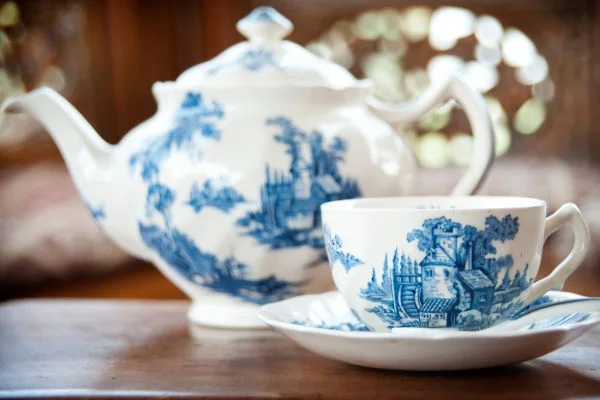If you love baking, you might have wondered if you can bake a cake in a porcelain dish. Porcelain is a popular material for cookware and bakeware, but can it withstand the high temperature of baking?
In this article, we will explore the pros and cons of baking cake in porcelain and provide you with some tips to ensure successful baking.

1. What is porcelain?
Porcelain is a ceramic material made by heating materials, including clay, feldspar, and quartz, at high temperatures. It is known for its delicate and translucent appearance, and is often used for decorative items like vases and figurines.
Porcelain is also popular for cookware and bakeware due to its non-porous surface, which makes it easy to clean and resistant to staining.
2. Advantages of baking in porcelain
Baking in porcelain has several advantages. Firstly, porcelain is a good insulator, which means that it heats up slowly and distributes heat evenly. This results in a cake that is baked evenly without any hotspots.
Secondly, porcelain is non-reactive, which means that it does not react with acidic ingredients like citrus and vinegar. This makes it ideal for baking cakes that contain these ingredients. Finally, porcelain is aesthetically pleasing and can be used for serving your cake directly from the oven.
3. Disadvantages of baking in porcelain
While porcelain has many advantages for baking, it also has some disadvantages. Firstly, porcelain can be fragile and is more prone to chipping and cracking than other materials like metal and glass.
Secondly, porcelain does not conduct heat as well as metal, which means that it may take longer for your cake to bake. Finally, porcelain is not suitable for high-temperature baking, which means that it may not be suitable for certain types of cakes like angel food cake.
4. Can you bake cake in porcelain?
Yes, you can bake a cake in porcelain, but there are some precautions you need to take. Firstly, make sure that the porcelain dish is oven-safe and can withstand the high temperature of baking.
Check the manufacturer’s instructions to ensure that the dish is suitable for baking. Secondly, avoid sudden temperature changes, such as placing a hot porcelain dish in cold water, as this can cause the dish to crack or shatter. Finally, do not use porcelain dishes that have cracks or chips, as they may break during baking.
5. Tips for baking cake in porcelain
To ensure successful baking in porcelain, follow these tips:
- Grease the porcelain dish with butter or cooking spray to prevent sticking.
- Preheat the oven and place the porcelain dish on the middle rack.
- Avoid using metal utensils on the porcelain dish, as they can scratch the surface.
- Use a toothpick or cake tester to check if the cake is done. If the toothpick comes out clean, the cake is ready.
- Let the cake cool in the porcelain dish for 10-15 minutes before removing it.
6. Precautions when baking in porcelain
When baking in porcelain, it is important to take the following precautions:
- Do not place a hot porcelain dish on a cold surface, as this can cause the dish to crack.
- Do not use abrasive cleaners on porcelain, as they can scratch the surface.
- Avoid using porcelain dishes that have cracks or chips, as they may break during baking.
- Do not expose porcelain to extreme temperature changes, as this can cause the dish to crack or shatter.
- Handle porcelain dishes carefully, as they can be fragile and prone to chipping and cracking.
7. How to clean porcelain bakeware
To clean porcelain bakeware, follow these steps:
- Let the dish cool down completely before washing it.
- Wash the dish with warm water and mild dish soap.
- Use a soft sponge or cloth to avoid scratching the surface.
- Rinse the dish thoroughly with water.
- Dry the dish with a soft towel.
8. Porcelain vs other bakeware materials
Porcelain is not the only material used for bakeware. Other popular materials include metal, glass, and silicone. Each material has its own advantages and disadvantages, and the choice of material depends on personal preference and the type of cake you are baking.
For example, metal bakeware heats up quickly and is good for baking cakes that require high temperatures, while glass bakeware heats up slowly and is good for baking delicate cakes that require gentle heat.
FAQs
No, it is not recommended to bake a cake in a porcelain tea set as it is not designed for baking and may not be oven-safe.
Yes, porcelain ramekins can be used for baking cake, but make sure they are oven-safe and follow the same precautions as baking in a porcelain dish.
Yes, porcelain is microwave-safe, but make sure there are no metal decorations on the dish.
The baking time depends on the recipe and the size of the dish. Follow the recipe instructions and check the cake for doneness with a toothpick or cake tester.
No, it is not recommended to put a hot porcelain dish in the fridge as it can cause the dish to crack due to the sudden temperature change.
Conclusion
In conclusion, baking a cake in porcelain is possible and has many advantages. Porcelain is a good insulator, non-reactive, and aesthetically pleasing.
However, it is also fragile and may not be suitable for certain types of cakes. By following the tips and precautions outlined in this article, you can ensure successful baking in porcelain and enjoy delicious cakes.
